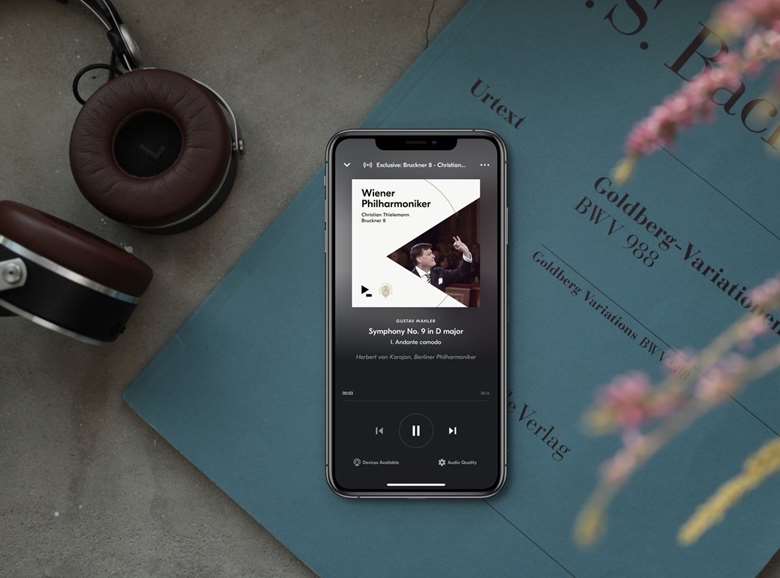Why classical music streaming is good for the industry
Steve Long
Saturday, November 7, 2020
BPI figures show that growth in streaming provides a real opportunity for artists and record labels

The last 30 years has been a fascinating period of change for the recording industry, and continues to be so. The pace of change is possibly the fastest since the business started, presenting both opportunities and challenges. I for one am very encouraged by the way the industry has been moving. With the evolution of digital technology, there were opportunities to remaster and reissue analogue recordings and innovative ways to exploit the new delivery methods, the first of which was of course the CD. This was initially seen as a positive change with new, better quality recordings and the chance to revitalise back catalogues.
The invention of the CD lead to a huge increase in classical recordings being made and reissued, and while there were some blockbusters (and some very fast gravy trains) the underlying consumer demand may not have been as great as we were all led to believe.
If you take recordings such as the Three Tenors, Vivaldi’s Four Seasons and Górecki’s Symphony No 3 out of the picture, the true trends in classical music consumption begin to emerge. The public were being over-served with more than 600 new classical releases per month – an unsustainable level of output. The contraction of the business that followed in the early 1990s was perhaps more of a reality-check than a ‘recession’.
Just as the CD business had managed to realign itself with consumer demand, along came digital distribution as the next bombshell. Many labels were initially sceptical of downloading, especially with the vast amount of illegal file-sharing that sprouted as a result. The classical sector wasn’t, in fact, that badly affected by pirates and the like. In my view, the original Napster was a good thing (were it not declared illegal), since peer-to-peer marketing became and continues to be one of the most potent marketing tools there is. This is now coming into its own with social media and sharing of playlists.
By the mid noughties, downloading had generally become accepted and was generating significant revenues for our industry, helped by hi-res downloading for which classical music was certainly over indexing.
We can’t ignore the impact of the decline of the CD in other genres and the knock-on effect that it had on classical sales. Many traditional shops that sold all genres of music (including classical) couldn’t survive in the digital age and were forced to shut. Likewise the demise of many manufacturing plants and distribution companies which were servicing the industry as a whole. The decline of the traditional market was expedited by the growth of some very powerful mail-order companies soaking up much of the business (not mentioning any names here).
It feels to me like just as a new equilibrium was being reached with the general acceptance of downloading, along came streaming to upset the balance. Again, this was seen by many as the next death knell for our industry – which makes me wonder why so many people are always seeking to find our next terminal illness.
Streaming is not going to go away – a message that the coronavirus pandemic has driven home like never before. It is the format of choice for the younger generation, but it increasingly, thanks to lockdown, an older audience has got its head around streaming technology, which is bound to have a lasting impact on the way classical music is consumed in future. One of the many reasons that people in our industry have been so against streaming is the fact that the revenue per stream is infinitesimally small and is butchering physical sales; but you have to look at the market as a whole and the number of streams that are happening each day, hour and minute of the year and the revenue that these are generating for the copyright owners. This runs to literally billions of dollars a year that is being pumped back into the industry, and is the sole reason why recorded music revenue has been going up exponentially year on year since 2016. Interestingly, by 2018, revenue from sales of physical product (CDs, vinyl and even cassette tapes) was also back on the increase. In 2019, sales of vinyl across genres had reached 4.3 million (figures from the BPI) while streaming passed the 100 billion mark representing a 3,000% increase since 2012 when streaming statistics were first published. So perhaps it is possible to have our cake and eat it. Classical music may only represent 3% of the total market but if the total market is growing, so is our slice of it.
One of the things I like about streaming aside from the incremental revenue is the fact that people are actually consuming our music. We never really knew if the CDs or downloads that were being bought were being listened to and appreciated. Of course we had been paid for selling them, but it’s nice to know with streaming that the music that we record is actually being consumed. Not only that but we can see where and when it’s being consumed and to some extent, by whom. The data is an increasingly valuable tool for us, affecting all aspects of our business including A&R decisions, marketing and ultimately sales.
Streaming is making classical music accessible to all, so anyone who may have felt intimidated by a classical department of a record shop or entering a concert hall can now try the music without those fears. It’s also giving affordable access to a vast number of consumers, in the way that radio did in the past.